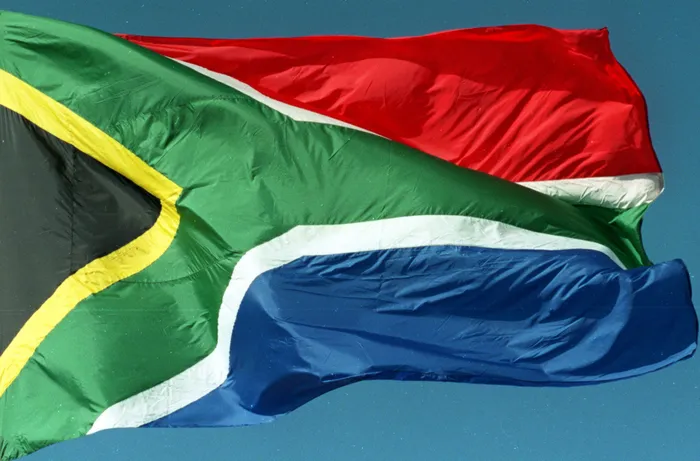South Africa also belongs to all whites who live in it, Dutch and English: Reflections of what supremacy

Picture: Leon Muller
By Masilo Lepuru
I do not want to South Africa anymore, I want to Azania (the words of poet Makhafula Vilakazi).
There are several ways in which one can analyse the problem of racism in South Africa.
One can look at the recurring racist incidents such as the white woman who said that black men have to be banned and killed and that black women should have their uterus cut out.
And most recently the white men who attacked young black boys in a pool.
There is a symptomatic way of thinking which focuses on the manifestation of the problem rather than treating its fundamental cause.
Another way is a radical one which instead of emphasising the symptoms of a problem, focuses on the fundamental root of the problem.
The criminalisation of racism is indicative of the symptomatic way of thinking which dominates discussions on racism in South Africa.
There is always a call to arrest few crude racists by naively claiming that “racism is rearing its ugly head again” and that these racists should not be regarded as part of South Africa.
The hegemony of liberal constitutionalism frames how most people in South Africa define racism. Racism tends to be defined naively as a manifestation of individual prejudice. This implies that racism only takes place when few honest whites indulge in spectacular acts of racism. When this does not happen, the assumption is that there is no racism. This is why the phrase “racism is rearing its ugly head again” is normally used when a crude racist incident is reported. This is how the white and Black Liberal Tradition define racism in South Africa, a definition which is fundamentally ahistorical and individualised.
The analytical and ahistorical definition of racism spearheaded by the Congress tradition of the ANC and the DA as ideological bastions of liberal constitutionalism has become “common sense” in post-apartheid South Africa. The problem is not the history of South Africa itself but a few individuals within it who are regarded as racists. Ironically the real South Africans, namely white settlers who are historical racists are regarded as backward when they express overtly and honestly their white South Africaness since 1910.
The Black Radical Tradition on the other hand has always defined racism as a system of white domination which stems from the history of conquest and enslavement of people of Africa descent by Europeans. Racism is structural and is about collective power as opposed to mere individual prejudice. In terms of this tradition racism is permanent in a society dominated by whites and does not “rear its ugly head” randomly. South Africa as a white settler formation based on conquest by European conquerors since 1652 who became white settlers through land dispossession is itself the fundamental problem and not just a few crude racist white settlers who live in it.
Racism here is white supremacy and the only historical system of white domination while figments of imagination such as black racism or reverse racism have no foundation in reality and history. Racism as the doubting of the humanity of the Indigenous people by European conquerors and the justification of land dispossession preceded the founding of South Africa in 1910. This implies that when South Africa was founded in 1910 by European conquerors who had no right to the land they dispossessed from its rightful owners, racism was already structural.
It is in this sense that South Africa was founded by white settlers who have been racist since the conquest of the Indigenous people in 1652 in wars of colonisation. This is why when Lord Milner and Jan Smuts as the white settler founding fathers of South Africa imagined and invented South Africa, they regarded it as a White man’s country.
South Africa was founded by whites and for whites following white reconciliation between the English and Dutch settlers after the Anglo-Boer war. Thus, South Africa is foundationally white and has always belonged only to all whites who live in it.
The call for black men to be killed, the cutting out of the uterus of black women and the attack on the young black men by white settlers are the highest expression of white South Africanism/ness. These whites are the honest and true South Africans. To say that they are racist is obvious but redundant since (white) South Africa itself is a racist expression of the racism of white settlers since 1652.
Not only are the above racist incidents true and honest expressions of white South Africanism but epitomise the core of racism. This core is the fear of genetic annihilation. Eugenics literature abounds with the racist fear by whites of being genetically annihilated by Africans thus the hostility to their reproduction. In South Africa it is called the black peril/danger by the English settlers and “swart gevaar” by the Dutch settlers who delusionally call themselves the Afrikaners.
Jan Smuts the racist founding father of South Africa called it “prolific barbarism”.
In conclusion to put a permanent end to this series of racist incidents the Indigenous people must end South Africa itself which has never belonged to them (despite their fantasy of being black South Africans) and create a New Africa/Azania premised on Lembede’s Africa for the Africans.
- Lepuru is a researcher at the Institute for Pan-African Thought and Conversation at the University of Johannesburg.